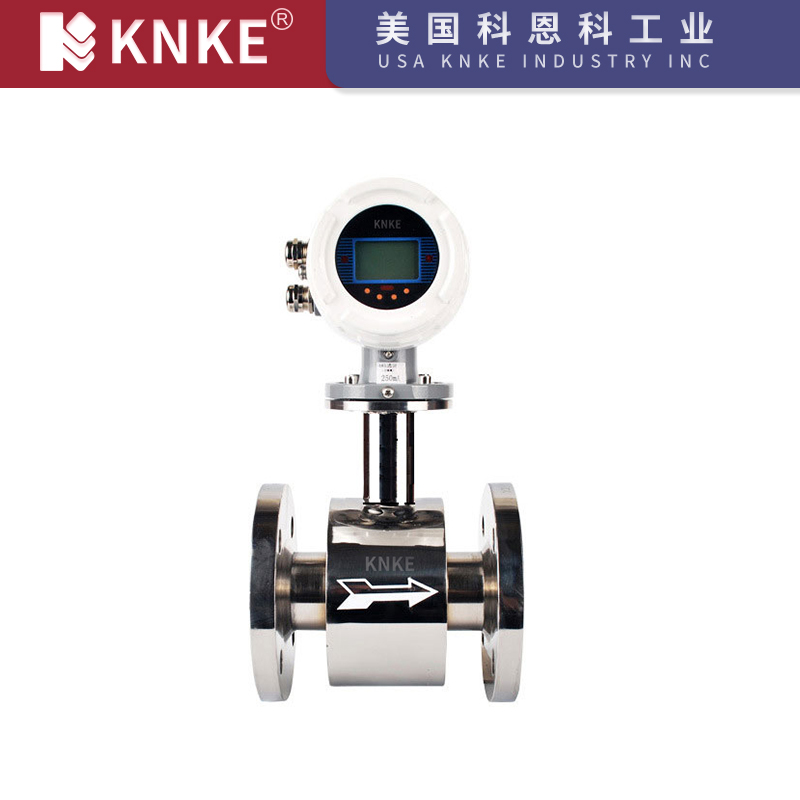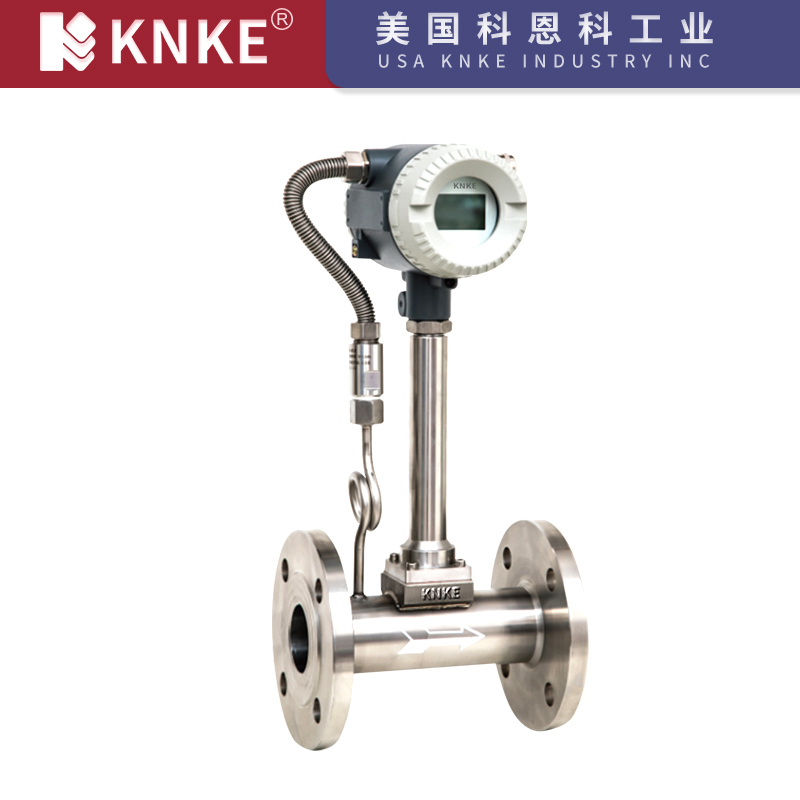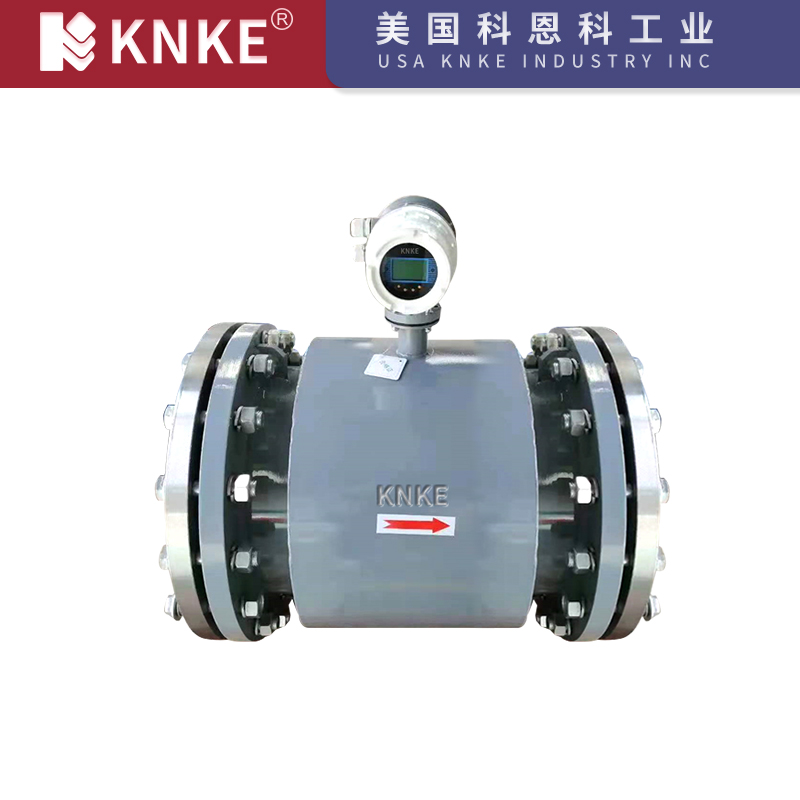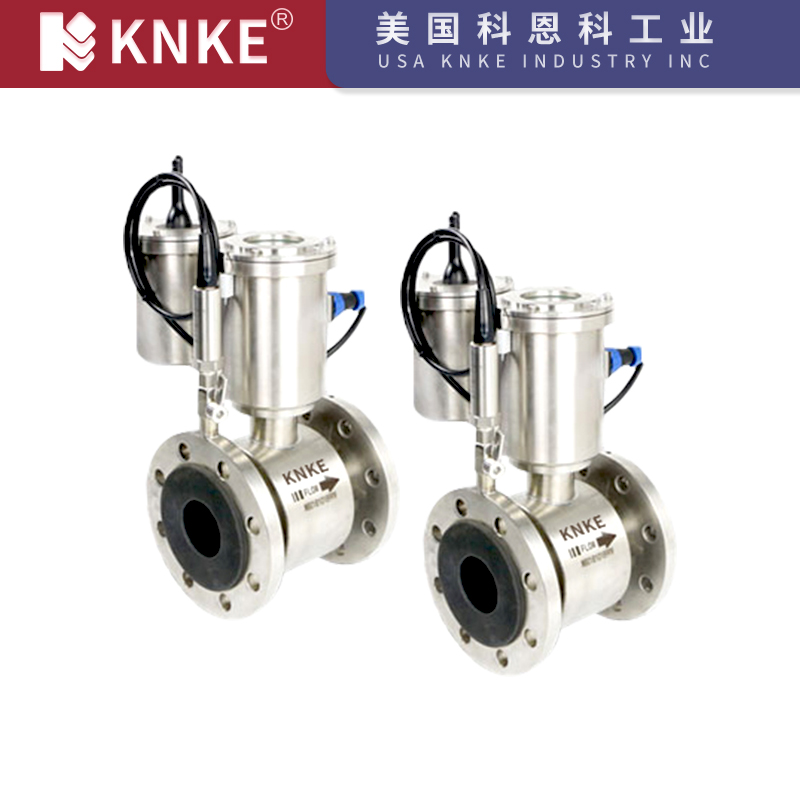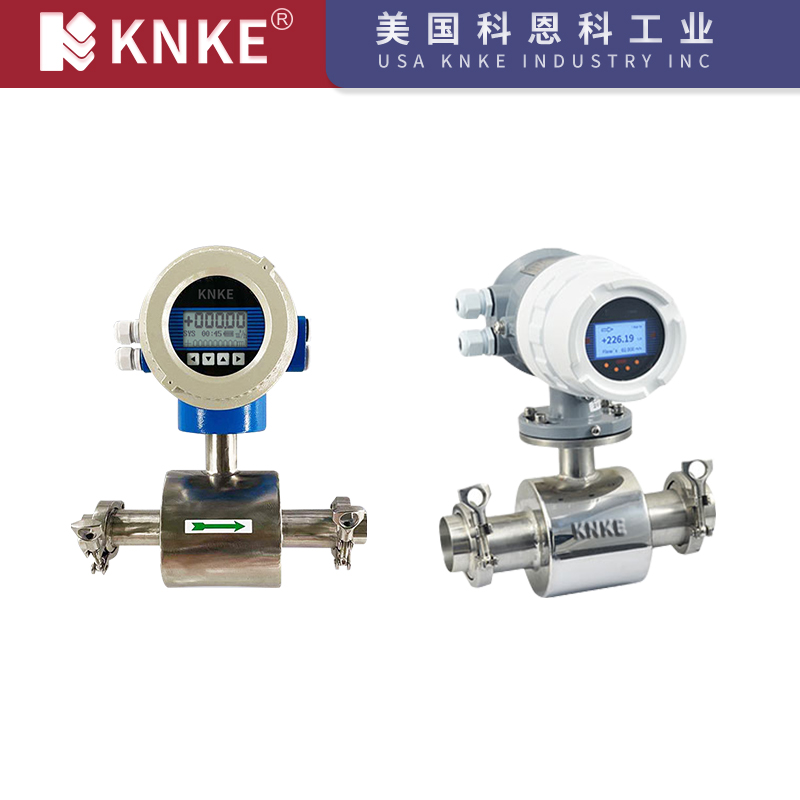Description
1. Overview of the KNKE Stainless Steel Electromagnetic Flowmeter
The KNKE stainless steel electromagnetic flowmeter is designed using high-quality 304SS, 316SS, and 316L stainless steel. It features a lining made of PTFE (polytetrafluoroethylene) or full stainless steel. The flowmeter ensures high measurement precision because its induced voltage signal has a linear relationship with the average flow velocity. Unlike other flowmeter types, this device remains unaffected by changes in fluid density, viscosity, temperature, pressure, or conductivity. Here are its key features:
- No obstructing components: The flowmeter avoids adding pressure loss, making it highly efficient.
- Long-lasting sensor: Since the sensor has no moving parts, it requires less maintenance and lasts longer.
- Short straight pipe section: The induced voltage signal forms across the entire magnetic field, so the straight pipe length only needs to be 5 times the diameter of the pipe.
- Corrosion and abrasion resistance: The sensor’s electrode and lining materials are chosen to resist corrosion and wear when exposed to various liquids.
2. Physical Properties of the KNKE Stainless Steel Electromagnetic Flowmeter Casing
| Property | Value |
| Tensile Strength (σb) | ≥515-1035 MPa |
| Yield Strength (σ0.2) | ≥205 MPa |
| Elongation (δ5) | ≥40% |
| Area Reduction (ψ) | Data not provided |
| Hardness (HBW) | ≤201 |
| Hardness (HRB) | ≤92 |
| Hardness (HV) | ≤210 |
| Density (20℃) | 7.93 g/cm³ |
| Melting Point | 1398~1454℃ |
| Specific Heat Capacity (0~100℃) | 0.50 KJ·kg⁻¹·K⁻¹ |
| Thermal Conductivity (100℃) | 16.3 W·m⁻¹·K⁻¹ |
| Thermal Conductivity (500℃) | 21.5 W·m⁻¹·K⁻¹ |
| Coefficient of Linear Expansion (0~100℃) | 17.2 × 10⁻⁶·K⁻¹ |
| Coefficient of Linear Expansion (0~500℃) | 18.4 × 10⁻⁶·K⁻¹ |
| Electrical Resistivity (20℃) | 0.73 × 10⁻⁶ Ω·m²/m |
| Longitudinal Elastic Modulus (20℃) | 193 KN/mm² |
3. Key Features of the KNKE Stainless Steel Electromagnetic Flowmeter
- Simple Structure: The flowmeter features a sensor with no moving parts. This design reduces maintenance requirements and increases the lifespan. Additionally, the absence of obstructing components ensures that the flowmeter consumes less energy and maintains high measurement accuracy.
- Moisture and Waterproof: Thanks to the integrated sealing structure, the sensor is ideal for installation in damp or underground environments.
- High Clarity Display: The flowmeter includes a wide-temperature LCD display with support for both Chinese and English menus. This intuitive, user-friendly display shows cumulative flow, instantaneous flow, flow velocity, pipe diameter, communication address, and more.
- Low-Frequency Constant Excitation: The flowmeter uses advanced low-frequency square wave constant excitation to enhance its anti-interference capability.
4. Applications of the KNKE Stainless Steel Electromagnetic Flowmeter
The KNKE stainless steel electromagnetic flowmeter is suitable for various applications across industries, including:
- Water and Wastewater Treatment: It provides precise flow measurement for clean water, wastewater, and effluent systems.
- Chemical and Pharmaceutical Industries: The flowmeter accurately measures aggressive chemicals, ensuring safe and reliable processing.
- Food and Beverage: It meets hygiene standards and measures flow in food production lines, dairy systems, and beverage production.
- Oil and Gas: The flowmeter’s robust design makes it ideal for handling crude oil and gas in pipelines.
- Pulp and Paper: It accurately measures the flow of pulp, helping manufacturers maintain consistency and efficiency in their processes.
5. Frequently Asked Questions (FAQ)
Q1: What is the accuracy of the KNKE electromagnetic flowmeter?
The KNKE electromagnetic flowmeter offers high accuracy with a linear relationship between induced voltage and flow velocity. Its accuracy remains unaffected by changes in fluid properties such as density, viscosity, temperature, and pressure.
Q2: Can the KNKE electromagnetic flowmeter handle corrosive fluids?
Yes, the flowmeter is designed with materials that resist corrosion and abrasion. By selecting appropriate electrode and lining materials, it can measure a wide range of corrosive fluids.
Q3: What is the minimum straight pipe length required for installation?
The flowmeter requires a minimum straight pipe section of 5 times the diameter of the pipe, making installation easier in systems with limited space.
Q4: How long does the KNKE electromagnetic flowmeter last?
Due to its design with no moving parts, the sensor has a long lifespan with minimal maintenance requirements.
Q5: Is the KNKE flowmeter suitable for underground installations?
Yes, the integrated sealing structure and high moisture resistance make it ideal for underground or damp environments.

